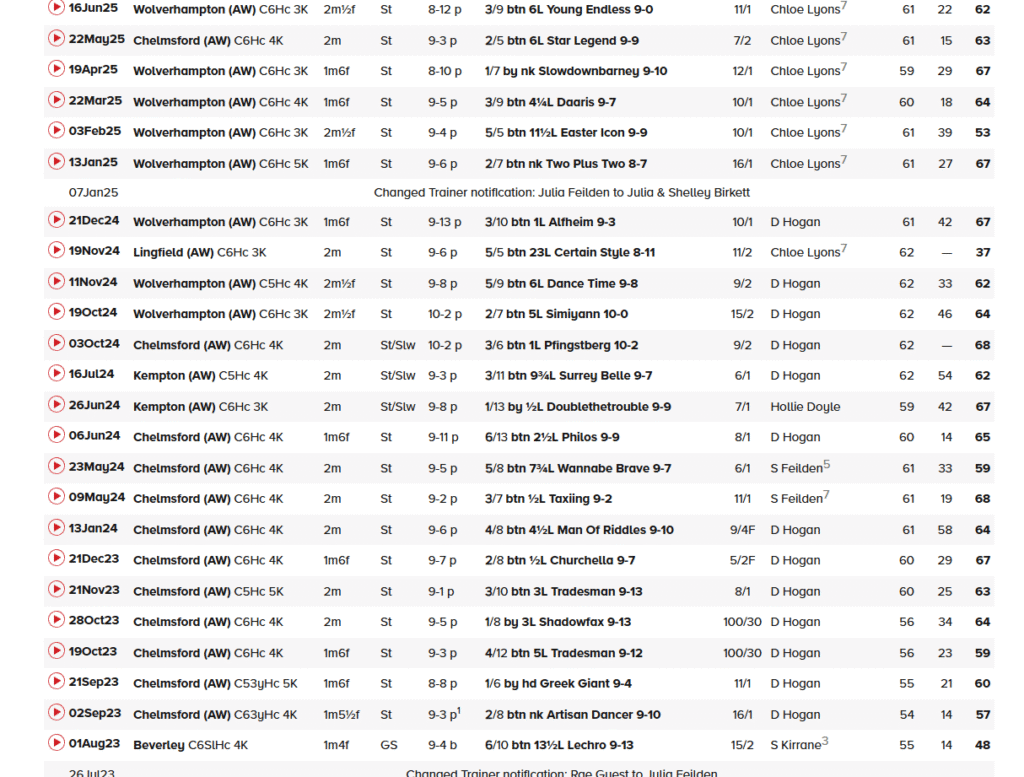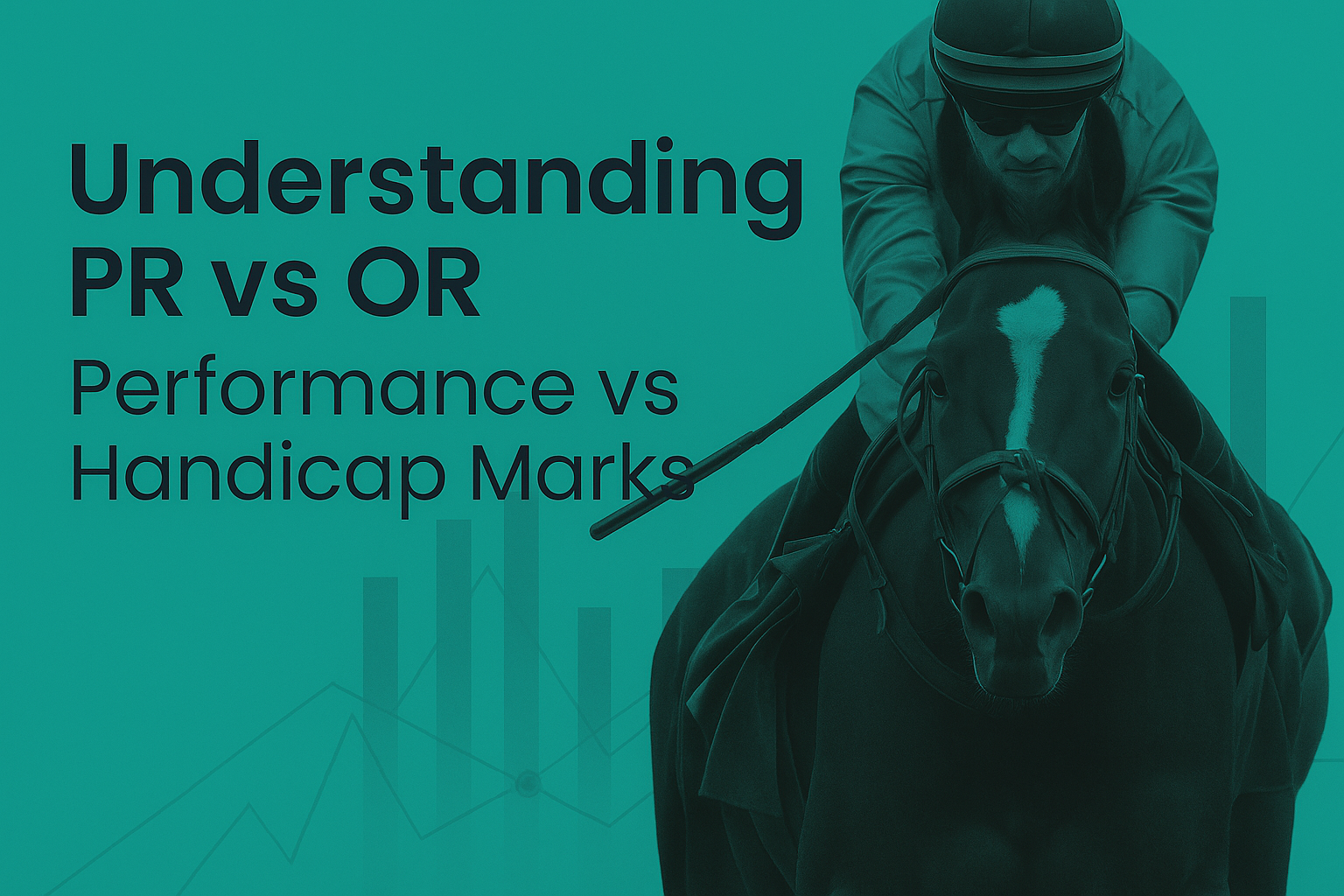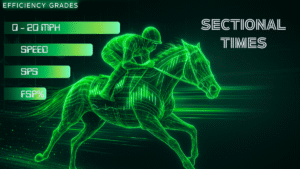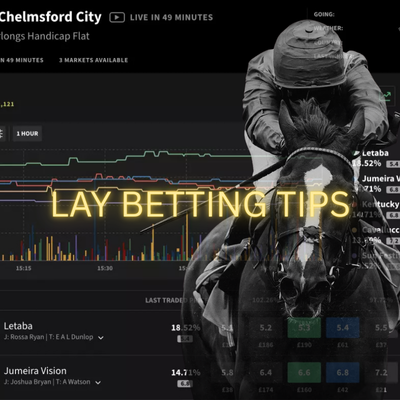How to Spot Well-Handicapped Horses Using Predictive Ratings
Spotting well-handicapped horses is the secret to finding value bets in handicap racing. Official Ratings tell you what a horse has done—but Predictive Ratings tell you what it can do.
If you’re serious about understanding how to get an edge over the handicapper, this guide is for you. I’ll show you how I build my Predictive Ratings (PRs) and how they help me uncover horses whose true ability sits well above their current handicap mark.
Whether you’re a punter looking for value or just someone fascinated by the inner workings of racing, here’s how to spot well-handicapped horses before the market and the official ratings catch up.
What Does “Well-Handicapped” Mean in Horse Racing?
A well-handicapped horse is one whose true ability is better than the mark given to it by the official handicapper.
The Official Rating (OR) is assigned by the handicapper based on past performances. It’s printed in the racecard and determines how much weight a horse carries in a handicap race.
But here’s the problem: the OR is reactive. It updates only after a horse has already shown its ability. By then, the value is often gone.
If you want to find horses before they “pop up” in the market, you need to assess their potential ceiling. That’s where my Predictive Ratings come in.
.
What Are Predictive Ratings?
My Predictive Rating (PR) is my personal assessment of how good a horse can be when everything falls right.
It’s not just about what a horse has done in the past. It’s about where I think it’s capable of running in the future, under suitable conditions.
I build my PRs from:
Surface preferences — some horses thrive on turf, others need the all-weather.
Trip suitability — a horse might be running over the wrong distance and hiding its true level.
Form context — did a horse finish down the field because it hated the ground? Or was it given an easy run for experience?
Trainer patterns — some trainers prepare horses gradually and strike when conditions are ideal.
Past winning marks — crucial for older handicappers in low-grade racing.
My PR isn’t static. I change it whenever a horse shows me something new, good or bad.
Why Bother With a Predictive Rating?
Because value in handicap racing comes from being ahead of the official handicapper.
If a horse’s real ability is better than its current OR, it’s well-handicapped. That’s your chance to get a price before everyone else notices.
My PR helps me:
Find lightly raced horses who are capable of a lot more than their current rating suggests.
Avoid older horses running off marks they simply can’t win from.
Spot false impressions in the formbook where a horse’s finishing position doesn’t tell the full story.
Two Key Scenarios Where Predictive Ratings Shine
Let me show you how I actually use PRs in practice. There are two main ways they help me spot well-handicapped horses.
1. Spotting the Improving 3-Year-Old
Few things in racing are more interesting than a lightly raced 3-year-old stepping into handicap company for the first time.
The handicapper often has little data to go on. A horse might have run twice as a juvenile, finishing midfield, or showing flashes of promise without putting it all together. Its initial OR is usually cautious.
But many of these horses improve 10–15 lbs or more once they mature physically and mentally. This is the classic “well-handicapped” scenario.
Here’s how I approach it:
Look for horses who finish strongly despite racing green.
Notice those kept to shorter trips when they might stay further.
Watch for races where a horse wasn’t given a hard time — “learning runs.”
Factor in pedigree clues suggesting physical development yet to come.
Example:
A 3-year-old has run three times as a 2-year-old over 6 furlongs, finishing 5th, 4th, and 6th. But in each run, it’s been staying on late, hinting it wants further. The handicapper gives it an opening mark of 67.
I might set its PR at 78 because I believe it’s crying out for 7 furlongs or even a mile. That’s an 11-lb edge—a huge potential value angle.
From there, I keep watching:
Is it stepping up in trip?
Is the trainer’s yard hitting form?
Has the market noticed, or is it still under the radar?
This is how you spot well-handicapped horses before everyone else does.
2. Knowing the Ceiling in Low-Grade All-Weather Races
At the opposite end of the spectrum are older horses in low-grade all-weather handicaps.
These horses are consistent but limited. They can’t suddenly find new ability beyond a certain level. Every one of them has a ceiling—a highest OR they can realistically win off.
This is where my PR becomes a fixed figure rather than a projection.
Example: Grand Duchess Olga
She’s a 5-year-old mare who’s mostly raced on the all-weather. I’ve set her PR at 59.
If her OR is 61, she’s running above her ceiling. She might run well, but winning becomes unlikely.
If her OR drops to 59 or below, she’s a live contender again—especially over 1m6f to 2m on the all-weather.
This is the rhythm of lower-grade handicapping:
Win a race, go up in the handicap.
Struggle for a few runs.
Drop back down to a winnable mark.
Knowing that ceiling is the key to spotting well-handicapped horses in these races.
Grand Duchess Olga
You can see full form at Racing Post

Racing Isn’t Just About Numbers
Numbers matter—but they’re not everything. Races are run in real life, and plenty can go wrong—or right.
A horse might get an easy lead and win without being the best in the field.
A slow early pace might kill the chances of hold-up horses.
A horse might get boxed in, clipped heels, or find no daylight until it’s too late.
That’s why my PR is a tool—not an absolute truth.
If a horse wins but everything fell perfectly for it, I won’t suddenly bump its PR 10 lbs higher. Likewise, if a horse finishes 6th but ran on well under hands-and-heels, I won’t knock its PR down.
The key is context. Always ask: was the horse genuinely outclassed, or was it unlucky or unsuited by how the race unfolded?
.
How You Can Start Building Your Own Predictive Ratings
If you want to get started spotting well-handicapped horses, try this:
Track past winning marks for older handicappers. Many can’t win once their OR rises just a few lbs above previous winning levels.
Study lightly raced horses for hidden improvement. Look for late progress, signs they’ll stay further, or evidence they weren’t fully tuned up yet.
Remember that Official Ratings are based on past runs. Always ask yourself whether a horse might have more to come.
Avoid overreacting to single runs. One good (or bad) result doesn’t define a horse’s ceiling.
Keep proper notes. Write down your own assessments. You’ll be amazed how quickly you start to spot patterns.
Handicap racing is a game of small edges. Predictive Ratings help me spot those edges before the handicapper and the market catch up.
Frequently Asked Questions About Well-Handicapped Horses
Q: What does well-handicapped mean in horse racing?
A well-handicapped horse is rated lower than its true ability, meaning it could outperform its current Official Rating.
Q: How do you spot a well-handicapped horse?
Look for horses with signs of improvement, hidden ability, or who’ve been running in unsuitable conditions. Compare their OR to your estimate of their true ceiling.
Q: What is a Predictive Rating?
A Predictive Rating (PR) is my personal estimate of a horse’s maximum ability level, based on its profile and performances—not just the Official Rating.
Q: Do Predictive Ratings guarantee winners?
No. They’re a tool to help find value bets, but racing always has unpredictable factors.
If you’re serious about finding an edge in handicap racing, learning how to spot well-handicapped horses is crucial. My Predictive Ratings have helped me identify value bets for years—and they could help you too.
Don’t just follow the Official Ratings. Work out where a horse’s ceiling truly sits—and you’ll be ahead of the game.
NEXT UP
How To Read A Race Card
Learn how to compare a horse’s projected ceiling with their Official Rating to assess suitability.















